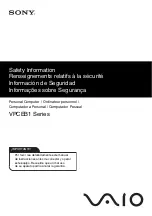
48
Wide Band AGC (WB) (Advanced Tab)
Touch the
WB
submenu button and then the
Advanced
tab to display the advanced controls for the Omnia.11’s
Wideband
AGC section. There are
6 va
riable controls and
1 drop-
down control located in the WB AGC Advanced
tab menu area:
Window:
At a setting of “0.0” the Wideband
AGC acts like a “regular” AGC
where the gain is
always either increasing or decreasing
.
Lower settings
turn the window func
tion on and
open up a “zone”
within which the gain can rest
and actually do nothing!
When the window setting is on, the audio can
drop by the dB value of the
selected
setting before
the AGC reacts.
This can
greatly help preserve natural program
dynamic
s
without
c
ompromising overall gain-
riding ability. Try settings of -3 to -6dB to start.
WB AGC Menu (Advanced Tab)
RTP Level:
RTP stands for Return to Platform. What RTP does is return the gain of the AGC to the selected
amoun
t of gain reduction or “platform level” in the absence of audio. This control adjusts the “resting” or “platform”
gain reduction level the AGC will return to when audio
p
auses or stops (while gated).
The primary purpose of RTP is to prevent the AGC gate from increasing the gain unnecessarily or holding the gain
too low during pauses in audio, which could result in an increase in noise level or unexpected sudden increase in
level when the audio returns.
RTP Speed
controls how fast the adjustment to the platform level (set with the
RTP Level
control above) takes
place
–
i.e., how long it takes the AGC to move to the target RTP gain reduction level. Range is from “0” (
off
) to 11
(fast).
Note: For maximum gain
-
riding range, we suggest a Wide Band
RTP Speed
se
tting of “0.0” for most popular music
formats which effectively disables RTP. Use higher settings if you have consistent board operators and don’t mind
that quieter program sections remain quieter.
Pause Threshold
activates and
changes the characteristics
of the dual platform “smart” moment-to-moment gate
function
. A setting of 0.0 turns off the smart gating, reverting it to
conventional gate
behavior. Settings other than
0.0 activate the smart gating function and higher settings allow the smart
gating to be more aggressive.
Note: Middle-
range settings can completely eliminate any perceived “pumping” effect during shorter quiet sections
without compromising overall longer
-tem gain-riding ability.
Makeup Gain
sets the amount of gain to be filled in during
quieter, softer program passages. The range is “0.0”
(off) to “11” (maximum). This function is also program dependent, and it interacts somewhat with the main Attack
and Release time constants. As the attack/release times are modified, the system also sca
les the
Make-Up Gain
time
constants. Use
less
makeup gain for processing more faithful to the source material; use
more
makeup gain for
greater loudness and “density” (a more “compressed sound).
Filter Freq (High-pass Filter Frequency):
This drop-
down control adjusts the cutoff frequency of the built
-in
high-pass (lo-
cut) filter. Available settings are “Out” (not recommended), “20 Hz”, “30 Hz” and “40 Hz”. A setting
of at least “20 Hz” is suggested for most formats to keep sub
-
sonic signals from affecting the processing
performance.
















































